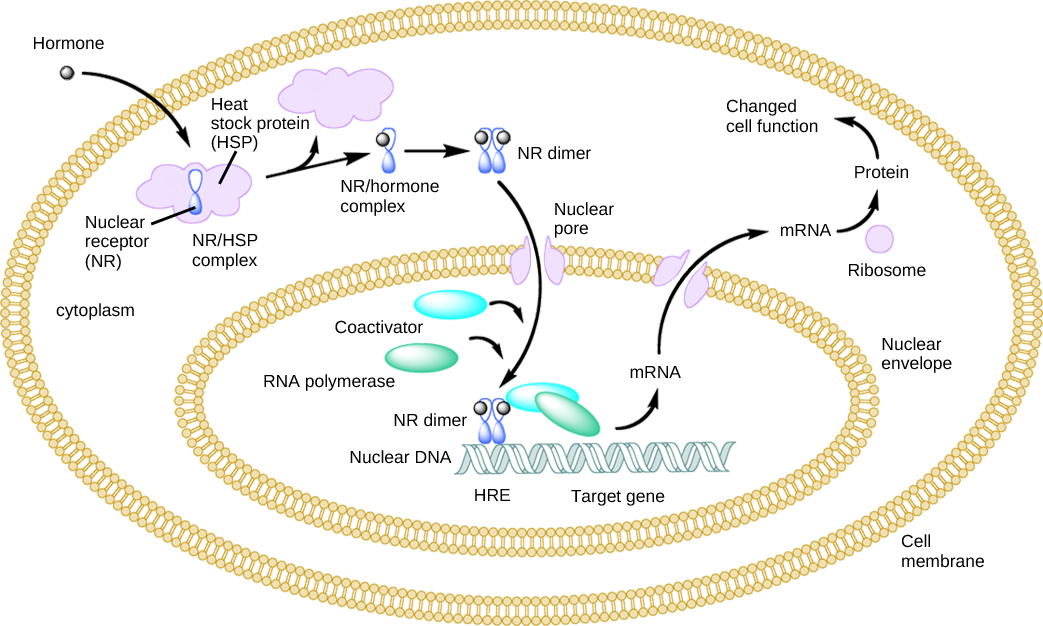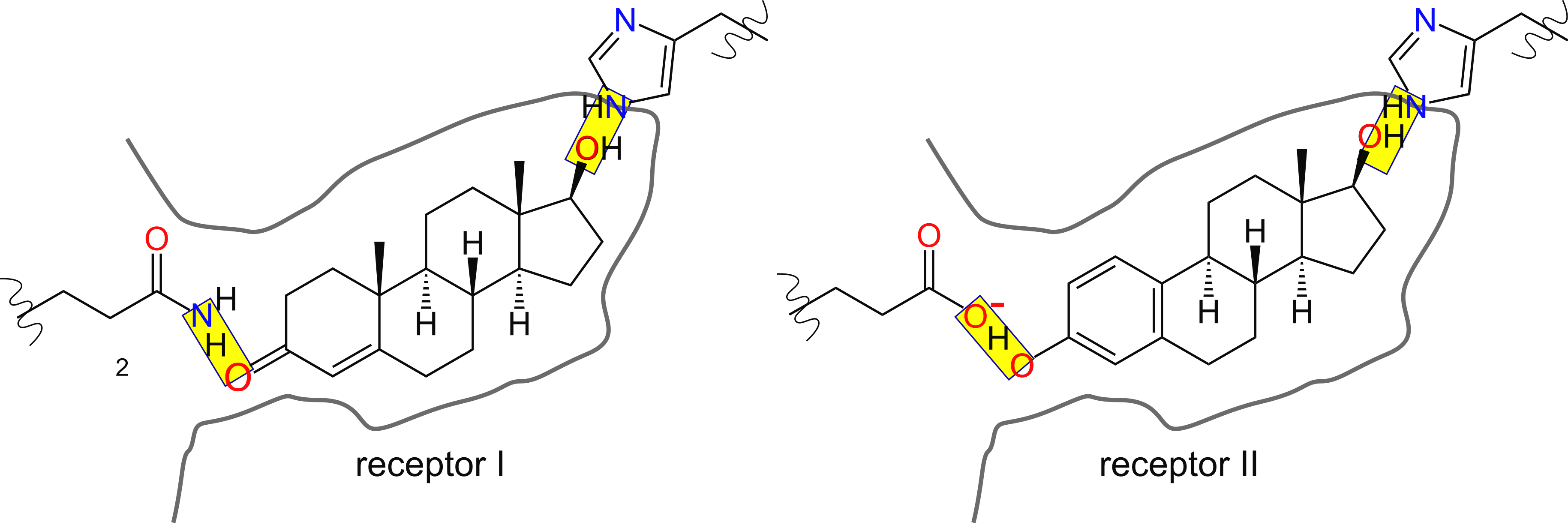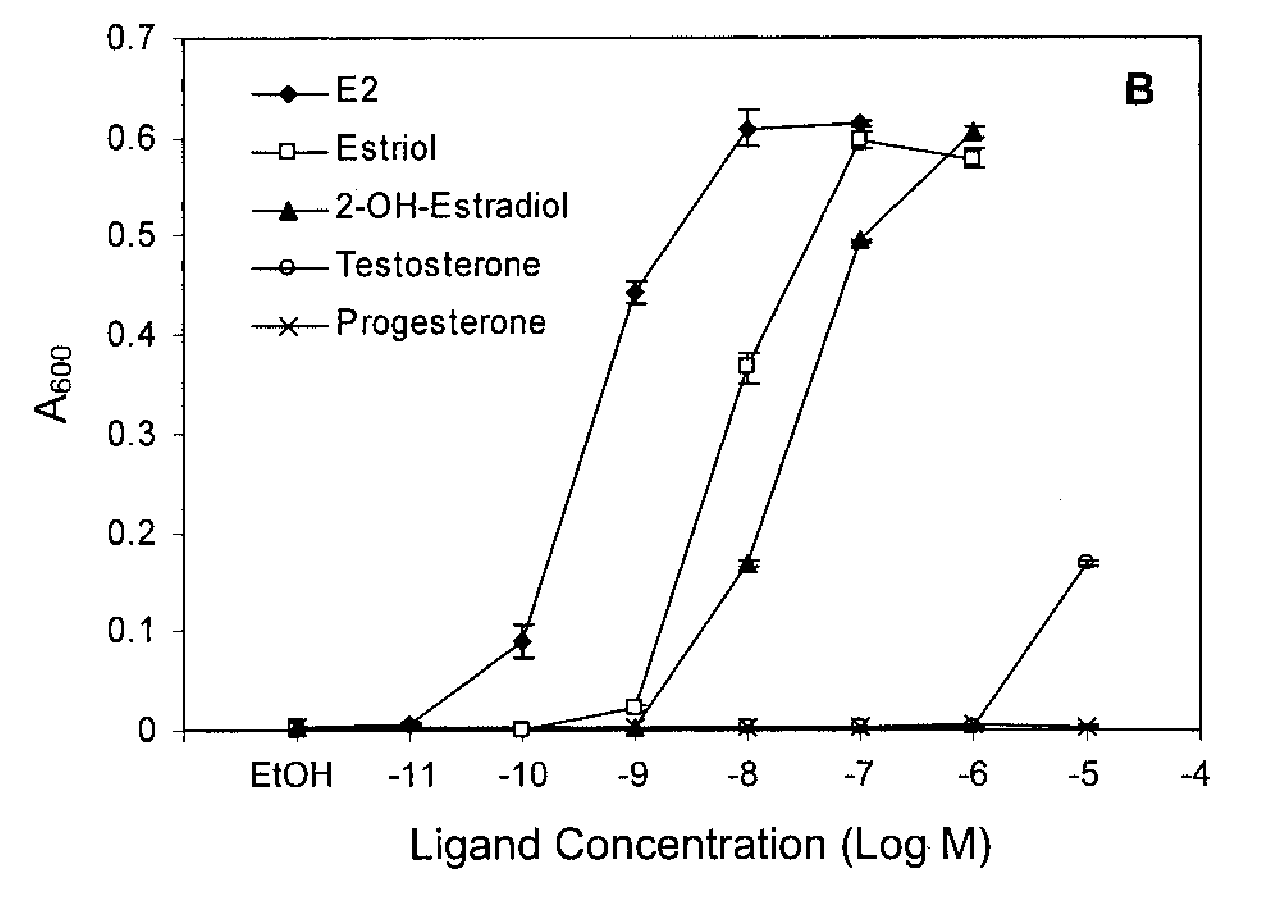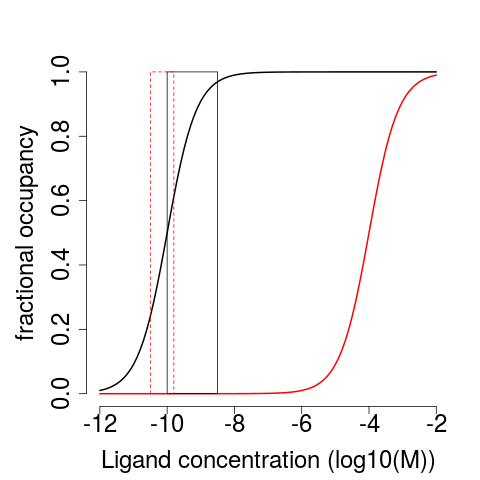Review session: tonight at 7 pm in Lawrence 115
First midterm: next Wednesday (10/18) 7 pm in MacKenzie 240C
Midterm will cover up through the end of this week (lectures 1-9, homework 1-3, lab 1-3).
If you've talked to me about an alternate exam location/time, please talk to me after class
Protein recognition
2016-10-11
Conceptual goals
- Proteins form specific interactions with molecular partners
- Specificity is achieved by creating interactions that can only be fulfilled by one partner, not others
- Interactions are "tuned" to affinities useful for the cell.
Skill goals
- Use structure-based reasoning to predict relative affinities and specificities of different interactions.
- Use $K_{D}$ to characterize the strength of interactions
Many animals exhibit sexual dimorphism














Estrogen and testosterone bind to different receptors, turning on different genes
- Estrogen binds to the estrogen receptor
- Testosterone binds to the androgen receptor
Receptors have almost identical steroid binding pockets
How do almost identical receptors distinguish between almost identical steroids?

Binding specificity is discrimination between steroids.
Specificity is determined by:
- shape of the pocket
- polar interactions
Biochemists use dissociation constants ($K_{D}$) to measure binding affinity
$ML \rightleftarrows M + L$
$M$ is macromolecule (protein)
$L$ is ligand (small molecule)
We can measure $K_{D}$ by following $\theta$ versus $[L]$
$K_{D} = \frac{[M][L]}{[ML]}$
$[ML] \times K_{D} = [M][L]$
$[ML] = \frac{[M][L]}{K_{D}}$
$\theta = \frac{[ML]}{[M] + [ML]}$
$\theta = \frac{[M][L]/K_{D}}{[M] + [M][L]/K_{D}}$
$\theta = \frac{[L]/K_{D}}{1 + [L]/K_{D}}$
$\theta = \frac{1}{1 + K_{D}/[L]}$
The $K_{D}$ is the concentration of $L$ at which $\theta = 0.5$.
 Chen et al. (2004) JBC 279(32):33855-33864
Chen et al. (2004) JBC 279(32):33855-33864
Steroids have only a small range of blood concentrations
ER responds to physiological concentrations of estrogen but not testosterone

Is one hydrogen bond, in principle, enough to explain the difference in bindng?

Summary
- Proteins can bind to specific molecules in the cellular environment
- Specificity is acheived by shape complementarity and polar contacs.
- The strength of these interactions is quantified by the Dissociation constant ($K_{D}$)
- $K_{D}$ is tuned to the concentration of the molecule in the cell
Review session: tonight at 7 pm in Lawrence 115
First midterm: next Wednesday (10/18) 7 pm in MacKenzie 240C
Midterm will cover up through the end of this week (lectures 1-9, homework 1-3, lab 1-3).
If you've talked to me about an alternate exam location/time, please talk to me after class